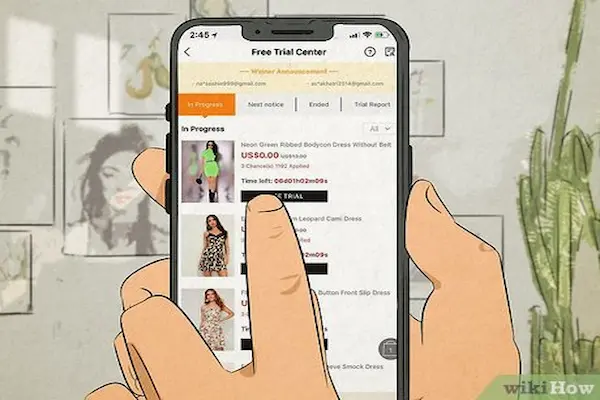A crochet table runner is a beautiful way to add style and charm to your dining table or coffee table. This versatile project can be customized in different colors, sizes, and designs to fit any home decor.
Anúncios
The pattern we’ll guide you through is simple but elegant, making it suitable for both beginners and experienced crocheters. Whether you want to create a classic lace design or a modern geometric style, this table runner will elevate your home decor.
In this tutorial, we will walk you through creating a rectangular table runner using a classic lace or filet crochet technique. You can adjust the length and width to fit your specific table.
Materials Needed for the Crochet Table Runner
To create your Crochet Table Runner, gather the following materials:
- Yarn: Choose a lightweight cotton or cotton blend yarn for a sturdy and elegant finish. A fine thread or lace yarn will create a delicate, lace-like effect.
- Approximately 200-400 grams of yarn, depending on the size of your runner.
- Crochet Hook: Size 2.5mm (C-2) to 3.5mm (E-4), depending on your yarn choice and desired look.
- Tapestry Needle: For weaving in ends.
- Scissors: For trimming yarn.
Cotton yarn is the ideal choice for a table runner, as it holds its shape well, is easy to clean, and gives a beautiful drape. You can opt for solid colors for a clean, elegant look or go for a variegated yarn for a more dynamic appearance.
Stitches Used in the Pattern
- Chain (CH)
- Single Crochet (SC)
- Double Crochet (DC)
- Slip Stitch (SL ST)
- Filet Crochet Technique: This involves creating a grid-like structure using chains and double crochet stitches, allowing for open spaces and patterns to form.
This pattern combines basic crochet stitches with the filet crochet technique to create an airy, decorative design.
Step-by-Step Instructions for the Crochet Table Runner
The crochet table runner is worked in rows, with the length being adjustable based on the number of rows you work. We will use the filet crochet technique to create a lace-like, grid pattern, but you can easily adapt this for other designs by adding motifs or solid sections.
Foundation Chain
- Chain a multiple of 6 + 3 for the foundation row.
- For a sample size of about 12 inches wide, chain 63. You can adjust the chain length to fit your desired width.
Row 1: Double Crochet Foundation
- Row 1: Work 1 double crochet (DC) in the 4th chain from the hook and in each chain across the row.
- Turn your work at the end of the row.
- Total: 60 DC (for a foundation chain of 63).
This row creates the solid foundation for your table runner.
Row 2: Creating the Grid Pattern
- Row 2: Chain 3 (counts as the first DC), skip 1 stitch, DC in the next stitch, chain 2, skip 2 stitches, DC in the next stitch, repeat across the row.
- Turn your work.
This creates a basic grid pattern with spaces that form the foundation for the filet crochet technique.
Row 3: Alternating the Grid
- Row 3: Chain 3 (counts as first DC), DC in the next chain space (from the previous row), chain 2, DC in the next DC (from the previous row), repeat across the row.
- Turn your work.
You are now alternating between the grid spaces and the double crochet stitches from the previous row to create the airy, lace effect.
Row 4: Continue the Grid Pattern
- Row 4: Repeat Row 3, working into the chain spaces and DC stitches from the previous row.
- Continue repeating this row until your table runner reaches the desired length.
The beauty of this pattern is its simplicity and adaptability. You can create a consistent, open grid pattern, or add variations with more solid sections by working rows of solid double crochet stitches between the open grid rows.
Optional Variations for the Table Runner
To customize your Crochet Table Runner, try incorporating these ideas:
1. Add Decorative Motifs
If you’d like to add more detail to your table runner, consider adding motifs, such as flowers, stars, or geometric shapes. You can integrate them into the grid by modifying the open and solid spaces.
- For example, create a solid block of double crochet stitches to form the shape of a star or heart, surrounded by the grid pattern.
2. Change the Border
You can also add a decorative border around the entire table runner for a more finished look. Here’s a simple way to do that:
- Simple Single Crochet Border: Chain 1, work single crochet (SC) stitches evenly around all four edges of the table runner, placing 3 SC in each corner to prevent curling.
- Slip stitch to the first SC to join.
- Shell Stitch Border: For a more intricate border, try the shell stitch.
- Into each stitch along the edges, work 5 DC into the same stitch, skip 2 stitches, slip stitch into the next stitch, and repeat around all edges.
- This will create a decorative, scalloped edge that adds a touch of elegance.
3. Play with Colors
You can use multiple colors to create stripes or blocks of color within your table runner. Switch colors every few rows, or create a striped effect by alternating between different shades.
Finishing the Table Runner
Once you’ve reached your desired length and added any decorative touches, it’s time to finish your crochet table runner.
Step 1: Weaving in Ends
- Use a tapestry needle to weave in all loose ends securely. Make sure all the yarn ends are neatly hidden within the stitches to prevent unraveling.
Step 2: Blocking the Runner
Blocking is essential for this project to ensure that the table runner lies flat and shows off its lace pattern beautifully. Here’s how to block your table runner:
- Dampen the runner: Lightly spritz the runner with water or use a steam iron on a low setting.
- Shape the runner: Lay the table runner flat on a clean towel or blocking mat, gently pulling it to its full size and shaping the edges.
- Pin in place: Use blocking pins to secure the edges in place while it dries.
- Allow to dry: Let the table runner dry completely before removing the pins.
Blocking helps open up the lacework and gives the runner a neat, professional finish.
How to Use Your Crochet Table Runner
Your Crochet Table Runner can be used in many different ways to enhance your home decor:
1. Dining Table Decor
Lay the table runner across the center of your dining table for an elegant and understated look. Pair it with matching or contrasting placemats and napkins for a cohesive setting.
2. Coffee Table Accent
Use the table runner as an accent on your coffee table. It adds a pop of texture and color to your living room decor. Place a decorative centerpiece, vase, or candles on top of the runner for a finished look.
3. Console Table or Dresser
A crochet table runner is a great way to dress up a console table or dresser. The lace-like pattern adds a soft, vintage touch to any room.
Common Questions About the Crochet Table Runner
How long should a table runner be?
A table runner typically measures between 36-72 inches long, depending on the length of your table. For a dining table, the runner should ideally hang over the edges by about 6-12 inches. You can adjust the length by adding or removing rows.
Can I use different yarn weights?
Yes, you can use different yarn weights. A lighter yarn, such as lace or fingering weight, will create a more delicate and airy table runner, while a heavier yarn will result in a denser, more textured runner. Be sure to adjust your hook size accordingly.
How do I care for the table runner?
Most cotton yarns are machine washable. However, to keep the lace pattern intact, it’s recommended to hand wash the table runner in cold water and lay it flat to dry. Follow the care instructions for your specific yarn.




